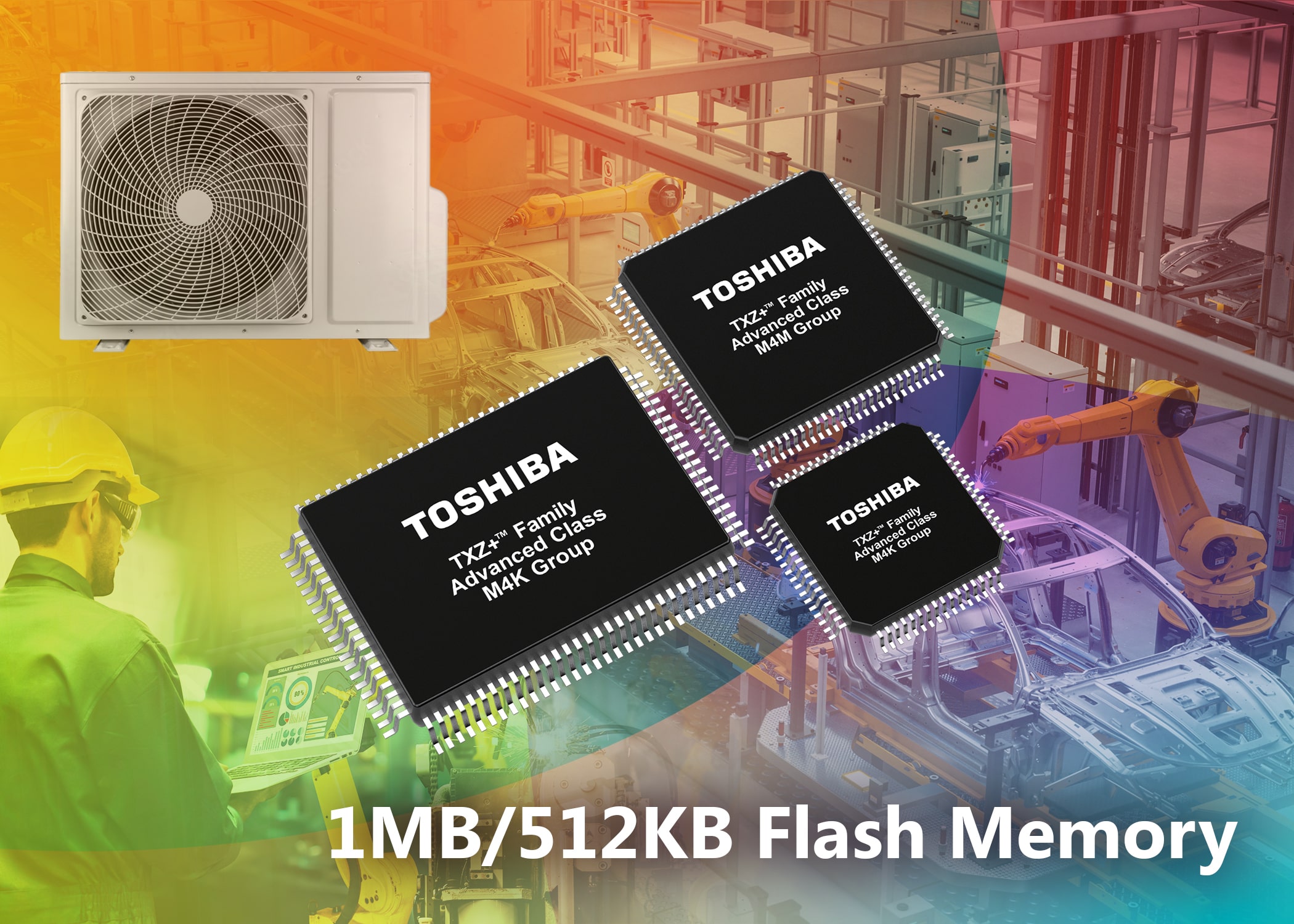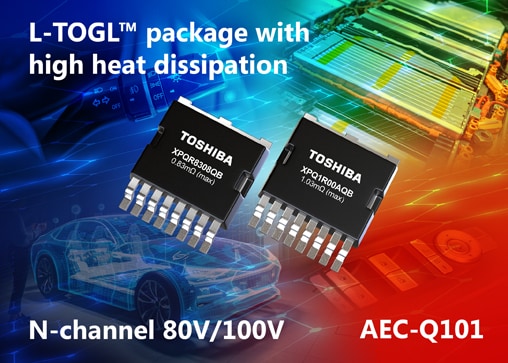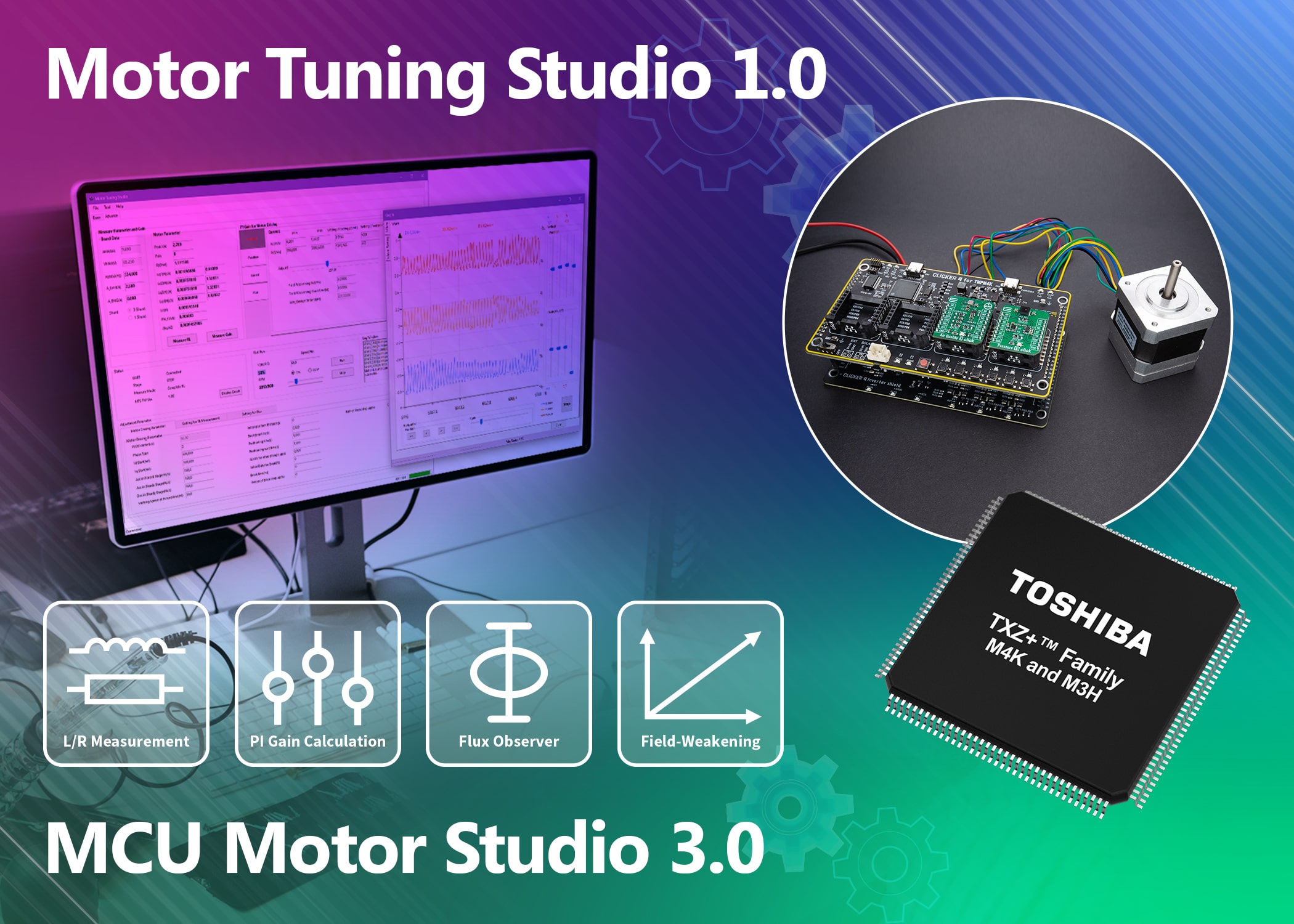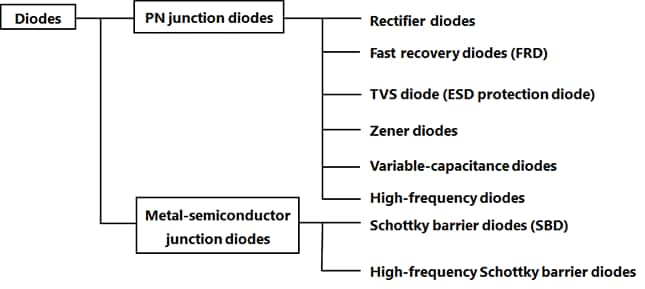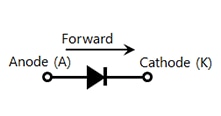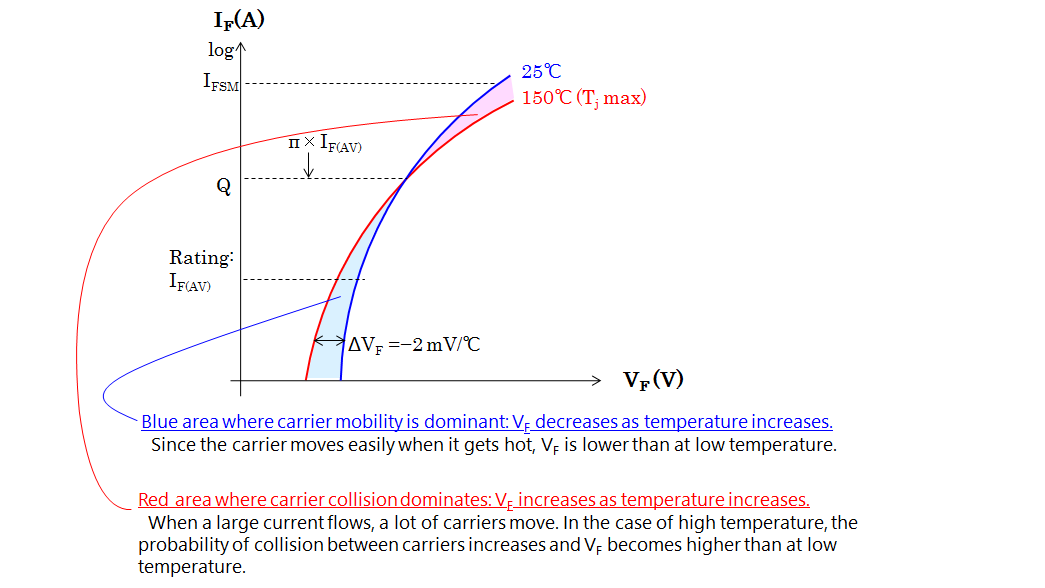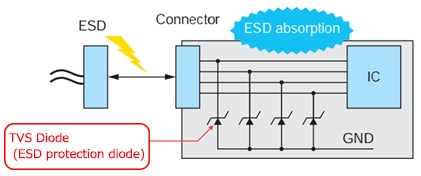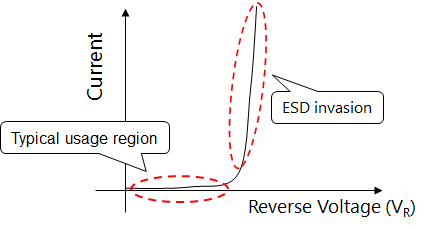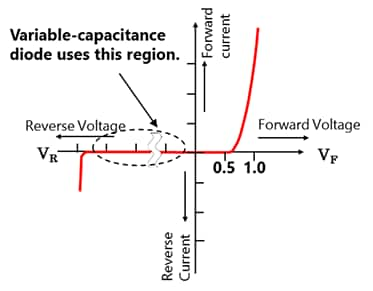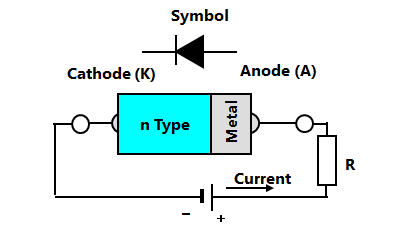FRDs (Fast Recovery Diodes)
Download "Chapter II : Diodes" (PDF:895KB)
The structure and function of fast recovery diodes (FRDs) are the same as those of rectifier diodes. Rectifier diodes are used for low-frequency applications below 500 Hz, whereas FRDs are used for high-frequency switching from a few kHz to 100 kHz. Therefore, the reverse recovery time (trr) of the diode characteristic, which is important for high-speed switching, is short. FRDs are also referred to as S-FRDs, HEDs, etc. according to the trr value.
trr of a general rectifier diode is several μs to several tens of μs. On the other hand, trr of an FRD is several tens of ns to several hundred ns and is about 1/100 of that of the rectifier diode. It is used in switching power supplies, inverters, DC/DC converters, etc.

Fig. 2-3(a) Example of diode switching waveform and loss
Fig. 2-3(b) Comparison of trr between general-purpose rectifier and FRD
The loss due to trr (reverse recovery loss) is negligible when the frequency is low, but this loss increases with frequency, and it cannot be ignored if it becomes several kHz or more.
Chapter II : Diodes
Related information
- Products
- FAQ
